Mountains in Anhui


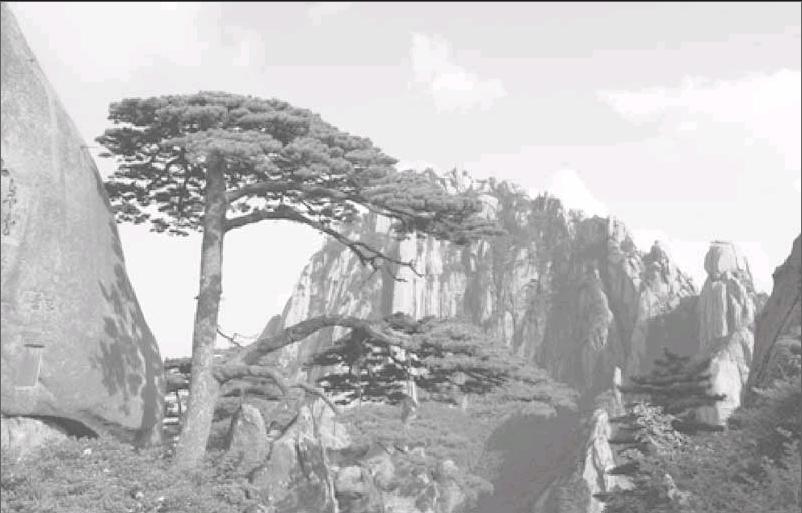
Probably the most famous of all of Chinas mountains is the mystical magic of the peaks of the Huang Shan. Immortalized in ancient and modern Chinese art, this area of hanging mists, sharply rising ledges and gnarled pines is of outstanding beauty, and is considered by most Chinese as an essential tourist destination.
Huang Shan
Huang Shan, known as ‘the loveliest mountain of China, was acclaimed through art and literature during a good part of Chinese history (e.g. the Shanshui ‘mountain and water style of the mid-16th century). Today it holds the same fascination for visitors, poets, painters and photographers who come on pilgrimage to the site, which is renowned for its magnificent scenery made up of many granite peaks and rocks emerging out of a sea of clouds.
Of all the notable mountains in China, it is probably the most famous to be found in the south of Anhui province. Originally known as Mt. Yishan it was renamed Mt. Huang Shan in 747 AD in recognition of the legendary Huang Di, who was the reputed ancestor of the Chinese people and who made magic pills for immortality here.
Wu yue is the collective name given to Chinas most im-portant mountains, namely Mt. Taishan in Shandong Province, Mt. Huashan in Shaanxi Province, Mt. Hengshan in Shanxi Province, Mt. Songshan in Henan Province and Mt. Hengshan in Hunan Province. It is said that you wont want to visit any others after seeing wu yue but you wont wish to see even wu yue after returning from it. This saying may give you some idea of the beauty and uniqueness of it. Together with the Yellow River, the Yangtze River and the Great Wall, it has become one of the great symbols of China.
It can boast not only of its magnificence but also its abundant resources and great variety of zoological species, for which it has been listed as a World Natural and Cultural Heritage Site.
Before and after sunrise is the best time to see sunglow. As with viewing the sunrise, you should be in position early.
From September to May is the best season for cloud viewing, especially on a clear day after rainy or snowy weather. Seas of clouds are infrequent in summer. To best experience the beauty of seas clouds, tourists should change their viewing locations points according to the height of clouds.
Jiu Hua Shan
Bordered on the Yangtze River in the north and overlooked the Huang Shan in the south, it covers an area of 100 square kilometers southwest of Qingyang County, Anhui Province , not far from the picturesque Huang Shan. It boasts 99 peaks and 18 scenic spots in its area. With its marvelous landscape and pleasant climate, it is considered one of the best summer resorts in China. In addition to its popularity as a tourist destination, it is a holy site where Buddhists assemble-- it has been established as one of the four sacred Buddhist shrines, along with Mt.Wutai in Shanxi, Mt.Emei in Sichuan, and Mt.Putuoshan in Zhejiang.endprint
According to historical records, Buddhism was first introduced to this mountain in the year 401. In 719, a Korean monk named Jin Qiaojue arrived and practiced Buddhism here for 75 years. Upon his Nirvana in 794, Jin Qiaojue was respected as the Earth Buddha by the locals, hence it has become the place where religious rituals were held to worship the God of Earth.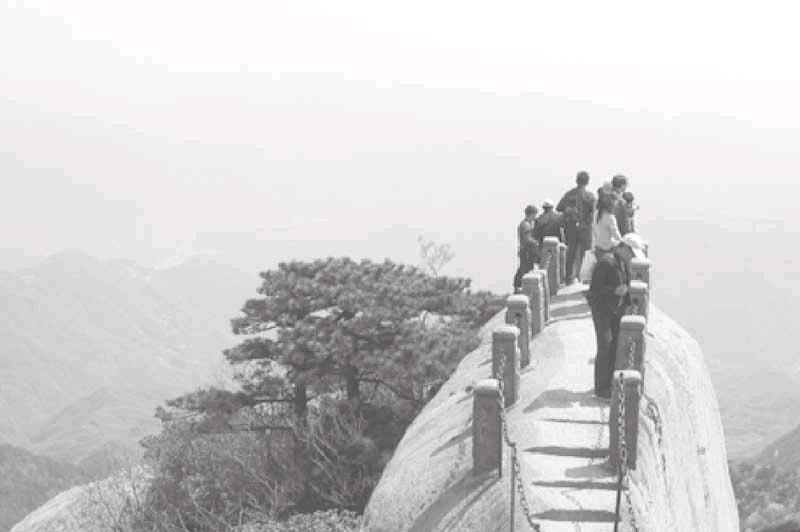
It has always been a place that attracts men of letters throughout the ages. The story goes that Libai(701-762), the famous poet of Tang Dynasty, once came to visit Jiu Hua Shan. The verse slipped out when he was intoxicated with the scene of lotus blooms-like peaks of the mountain, ‘From the azure skies above descends a jade-like flow, and nine fascinating lotuses rise out of the hills below. Later, poet Liu Yuxi(772-784) in Tang Dynasty, litterateur Wang Anshi (1021-1086) in North Song Dynasty and many other scholars, politicians and monks also made the journey to Jiuhuashan, and thus it got its fame. Just as a Chinese saying goes ‘A mountain is famous not for its height but for its holiness.
Visitors to the temples on the mountain are always impressed with the exquisite architecture and grand structure. Now there are no more than 90 temples in existence in it, most of them restored in Ming and Qing Dynasties. Among the most well known are the Incarnation Hall, Huacheng Temple, Zhiyuan Temple, Longevity Hall, Zhantanlin Temple, Ganlu Temple and Tiantai Zhending Temple.
Incarnation Hall Huacheng Temple is the oldest and holiest temple on Jiu Hua Shan. It is located in the center of Jiuhua Street. Though it first appears simple and solemn, the structure and decoration of the building are truly artistic. The engravings on lintels, brackets and roofs reinforce the brightness and liveliness of the building. The picture, ‘Nine Dragons Playing with Pearls on a panel in the Main Shrine Hall is a consummate piece of ancient Chinese art.
Precious sutras and other cultural relics in the temples are displayed in the Historical Relics Museum. The most valuable are the Buddhist canonical literature left from the Tang Dynasty, the Tripitaka left from the Ming Dynasty, and Emperor Kang Xi and Emperor Qian Longs handwritings left from the Qing Dynasty.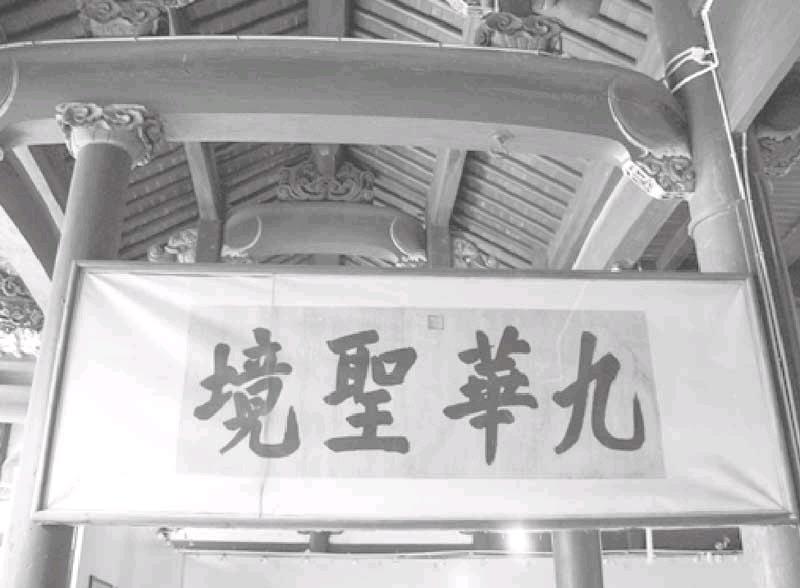
It is also worth mentioning the Corporeal Body Hall houses the skeleton of Monk Wu Xia that has been well preserved for more than 350 years. Wu Xia once wrote sutras with a mixture of gold powder and his own blood in a cave of the mountain during Ming Dynasty. After hard practice of sutras for a hundred year in it, Wu Xia passed away at the age of 126-- his body found in the cave three years after his death. Monks on Jiuhuashan believed Wu Xia was the reincarnation of Rinpoche. From then on, Buddhist believers have been keen to visit Jiuhuashan to pay homage to the monk.endprint
Additionally, the Temple Fair on it, also named Hid Puja, is held every year regularly since 1983. With a history of over 1,000 years, it has been regarded as national immateriality cultural heritage. The 30th Temple Fair, from September 1st to 30th in 2012, attracted a large number of tourists and pilgrims home and abroad. During the temple fair period, the newly built Dayuan Cultural Garden was put into trial operation. Its remarkable buildings, the 99-meter tall bronze Ksitigarbha Bodhisattva Statue, and 99-meter diameter Buddhas Light Pool, is another sightseeing and Buddha-worship sites on Jiu Hua Shan.
Tian Zhu Shan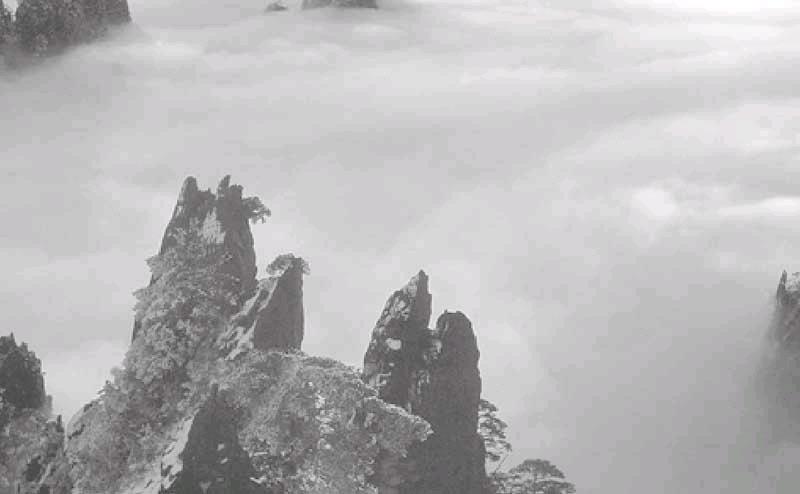
As the source of Anhui - Tianzhu Mountain is also known as the Wan Mountain. It is located within the boundaries of Qianshan County, Anhui province of China. The highest peak is called “Tianzhu Peak”, because its like a giant pillar soaring into the sky and the literal meaning of “Tianzhu”in Chinese, hence the name of the mountain. In 106 BC, Emperor Wu of Han Dynasty named Tianzhu Mountain as “the Southern Mountain” after he had ascended it. The name was then abolished by the Emperor Wen of Sui Dynasty, though people still call it “Ancient Southern Mountain”. Whats more, it was the fief of the country “Wan” in Chun-Qiu Period. The Mountain was called Mountain Wan and the river was called River Wan. So “Wan” is a short name for Anhui Province. The main scenic area covers 82.46 square kilometers divided into eight major scenic areas. In these areas, peaks are all magnificent, stones are all odd, caves are tranquil, and rivers are all elegant. Its also rich in man-made scenery. The mountain not only has the majesty of the northern mountains but also the elegance of the southern mountains. Tainzhu Mountain was listed as one of the first batch of the countrys key scenic areas in 1982, later was listed as the national forest park in 1992. There are many famous landscapes such as Mysterious Valley named “the countrys No.1 secret place of granite caves”, Third Patriarch Temple of the third generation Chan patriarch, the world marvelous sight- ancient boulder hole and cliff carvings and the drift of Qian River called the first drift of Jianghuai. It was the place where the story “peacocks flying to the southeast” occurred that makes you lost in wild and fanciful thoughts. You will understand the connotation of “cut a bold and successful figure” when you come to the rouge well where sisters of Joes fixed their hair and clothes in dynasty of Three Kingdoms. This area not only has a strong appeal to many famous men of literature and writing such as Wang Anshi, Su Shi and Huang Tingjian, but also is the hometown of the founder of Beijing Opera Cheng Changgeng, the famous writer of traditional Chinese novels-Zhang Henshui,the acrobatic queen-Xia Juhua and the new star of Huangmei Opera -Han Zaifen.endprint
The natural landscape of Tianzhu Mountain is stunning. Every Peak is odd, every stone is queer, every cave is tranquil, and every river is elegant. The great poet of the Tang Dynasty Bai Juyi once praised the scenery in one of his poems: “the heavenly pillar reaches the sun and the moon and the cave thats thousands of feet wide blocks thunders.” The famous poet Li Bai also said that: “After my alchemy is finished successfully, I want to become a recluse in the mountain.” Su Dongpo once said that: “I love the local conditions and customs of Shu State best of all my life, I want to be a recluse here when I am old.” They all considered the mountain as an ideal residing place .So you can see its unusual fascination. The mountain has the magnificent pillar-like shape and 45 marvelous peaks. It is also rich in exotic pine trees, queer stones, flowing waterfalls, valleys, tranquil caves, strategic passes and old forts. The third-largest artificial alpine lake “Alchemy Lake” is also located in this area. The eyes cannot take it all in -- too many things for the eyes to see and too many beautiful things to be absorbed all at once.
The elevation of Tianzhu Peak is 1488.4 meters. It flies high in giant pillar-like shape. The whole peak is comprised of stones and jagged rocks all around. It is magnificent and elegant. The shape is like column, awl, torch, sword or tower, its also like an excellent pen bears flowers. It was praised that you have no wish to visit any other mountains after viewing the Five Mountains and you do not wish to visit the Five Mountains after coming back from a trip to Huangshan Mountain. But you even dont want to visit Huangshan after coming back from Tianzhu Mountain. When the famous poet Li Bai of Tang Dynasty passed by Susong of the Yangtze River, he sounded loudly at the moment he saw the grand sight: Queer clouds are from queer peaks, elegant water contains elegant air. Youll never find better scenery other than in the green and majestic Wan Mountain. The great poet Bai Juyi once also praised the scenery in one of his poems: “the heavenly pillar reaches the sun and the moon and the cave thats thousands of feet wide blocks thunders.” Zhu Xi of Song Dynasty once greatly commended the sight that “The giant pillar soaring into the sky lies grandly in the east. All people said the universe is big, but I dont believe it only until I see this masterpiece.” And Li Geng of the Ming Dynasty also wrote a poem in praise: “the spectacular pillar is soaring into the sky. I havent ascended half of the peak, but Ive already in Peng Lai, enjoying the mirage. There are clouds and fog all around when you are walking in the mountain. There are wonders in this world, but this pillar beats them all!”endprint
Tianzhu Peak is protuberant and very steep. It is very difficult to reach the top. According to records, there were only two tourists arrived at the top so far.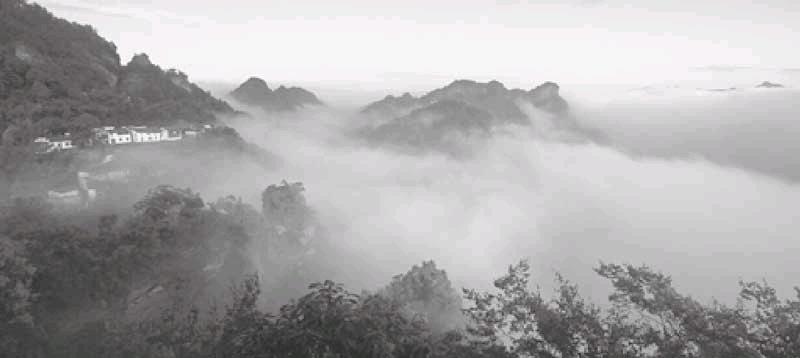
Flying Peak is located to the west end of Dragon Crooning & Tiger Growling Cliff. It soars into the sky and the whole body is comprised of stones and shallow water traces on the surface. The giant stone on the top is just like a big canopy. It is the third highest peak of Tainzhu Mountain and is 1,424 meters above sea level. The whole peak is a whole giant stone. There is a round stone covering the top of the peak that is about one meter long, 10 meters high and 100 meters at circumference. Its believed to have flown to the place from another planet. The stone is called ‘Flying Stone, after which the peak is named. The Flying Stone stayed straightly on the top just like a baldachin. Many visitors are very surprised at the stone. At the same time, they will have a concern: What should we do if the winds blow the stone down to the peak?
There is a legend that while Emperor Qianlong was touring Tainzhu Mountain, he didnt believe that the stone had flown there from another planet. So the emperor said: “It is not true that the stone has flown here. The belief is just a myth. Suddenly the lightning flashes and thunder rumbles, black cloud covers the peak and the Flying Stone rumbles after he said that. It seemed that the stone was to fly again. Emperor Qianlong was so scared and corrected himself immediately and said: “It is true that the stone has flown here. The belief is not just a myth. If its flying away now, why did it fly here in the first place? After that, the sky became clear again with auspicious cloud around. The Flying Stone also stayed steadily on the top of the peak.
Seeing from the south, the Flying Peak is like cap and bamboo hat; from the north, its like chess and millstone; from the East, its like ball and fist; from the West, its like an asleep ox and lying tiger. In the west cliff of the peak, there are stone scales just like the scale of a dragon because of the long-time corrosion by water. You can find that the scale is exactly like the map of todays Anhui province. Look, here is the Huai River and there is the Yangtze River.
Sanzu temple is located at the foot of Tian Zhu Shan, it is a famous ancient temple with beautiful scenery nearby. The temple was initially built in Tang dynasty and considered an important temple in Buddhism of China.endprint
You can travel to Tian Zhu Shan in all the four seasons, but the annual spring, summer, autumn is best season to travel. There are carved letter on the top of the stone which was carved by Luowen in Jiaqing years in Ming dynasty.
Tian Zhu Shan is the sub-tropical monsoon climate in the North with dense forests, quiet environment, the winter is warm and the summer is cool. It is a good place for summer resort. The average annual temperature is low, about 9.5℃. The maximum temperature in summer over the year is 29℃, the minimum temperature in the winter over the year is -13℃. The annual range in the year is small, normally 22.3℃. The sunshine hours in Mt. Tianzhushan is short, the average annual sunshine time is more than 2,000 hours. There are more clouds, fog in a year.
There are two cable cars in Tian Zhu Shan for tourists to up and down the mountain. The road from the downtown of Qianshan County to the mountain is about 26 kms long. The road between Mazu hut and Tea village is about 5.7 kms long. And there are travel buses for the tourists to go and back.
Lang Ya Shan
Lang Ya Shan lies in the southwest of Chuzhou City, the east of Anhui Province. It is a key national scenic spot and the state forest park, one of the five major resorts in Anhui. The mountain is 48 kilometers away from Nanjing City, and 130 kilometers from Hefei, the capital city of Anhui Province.
The resort——Zuiweng (an old drunkard) Pavilion covers an area of 115 square kilometers with a forest cover- age rate of 86%. There are rich plant and animal resources, including 54 bird species protected by the Sino-Japanese Agreement on the Protection of Migratory Birds, rare species of Langya elm and Zuiweng elm, and the most completely preserved natural secondary forest among the limestone zone of the Chinese transitional zone from subtropical to warm temperature. Clear brooks like the Langya Brook, Boli Brook and springs like the Rang Spring, Zhuoying Spring are singing, and caves like the Guiyun Cave, Xuehong Cave, Chongxi Cave, and Taoyuan Cave of surprising views are scattered in the mountain.
Many eminent poets and writers as well as people of wealth came here to build pagodas, compose poems and verses, so numerous relics of literature can be found in the mountain. There are six great scenes in Langya, namely mountain, temple, pagoda, spring, writing, and people. The Langya Temple built in the Tang Dynasty (618-907) is famous in eastern Anhui Province and also one of the major temples in China. The Zuiweng (an old drunkard) Pavilion was built in the Song Dynasty (960-1279) and gained its reputation for the verse ofZuiweng Ting Ji(the Pavilion of the Old Drunkard), which is regarded as the No.1 pagoda in China. Other rebuilt spots like the Nantian Door, Yefang Park, Shengxiu Lake, and Tongle Park and stele inscriptions ofZuiweng Ting Ji(the Pavilion of the Old Drunkard) that are in four different styles bring out the best in each other with the ancient constructions, ancient road, and ancient pavilion in the mountain.endprint
Qi Yun Shan
Qiyun is located at the foot of the Huang Shan. It is only 60 kilometers away from the scenic areas of the Huang Shan.
Qi Yun Shan has been laurelled as a scenic area of National Significance, National Geopark, National Forest Park, and one of the four Taoist Shrines. Visiting this mountain offers people more than they expect, from a gorgeous rurality to the Taoist culture of long standing, simply a combination of cultural highlights and natural landscape.
Qi Yun Shan used to be called White Mountain. It got this name from the description, “a rock thrusts high into the sky, reaching straight to the clouds, in parallel as the blue clouds”.
Actually, the mountain is not high at all, compared with other famous mountains in Anhui. The highest peak of the mountain is only 585 meters above sea level. Blanketed in thick mist, it looks like a mirage beyond reach.
The geological structure in Qi Yun Shan is known as“Geomorphology of Rosy Cloud.” All the peaks, rocks, grottoes and sands are as red as cinnabar, and as impressive as the rosy sunglow.
The scenic spot of Qi Yun Shan covers an area of about 110 square kilometers. The scenery in Qi Yun Shan consists of Yuehua Street, the Tower over Tower, Cloudy Crag Lake, Southern Mountain, and Heng River.
All the five scenic spots are of different feature and style. The poetic description of the scenery of the mountain is read as follows: “The steeply cliff highlights the astonishing apex, the precipitous cliff is dotted with serene caves, silver waterfall rushes down from the top of the crag, and the miraculous scenery is changeable all over the time.” This is simply an enjoyable landscape painting. On this supernaturally beautiful painting are 36 peaks and 72 strangely-shaped cliffs. Many serene caves and gullies, and ponds are hidden here and there.
Among them, Censer Peak is the most eminent one. Heavenly Bridge Crag is a wonderful rock formation that excels the nature. The Fairy Cave is so secluded that it simply is a mystery for travelers. Cloudy Crag Lake appears to be of comeliness and ease. Pearl Curtain Fount throws out gold and jade.
All the scenic areas bring the travelers a sense of ecstasy. Qianlong, the fourth emperor who enjoys a long reign in the Qing Dynasty, once described Qi Yun Shan as “no place of interest under the Heaven can compete the beauty of Qi Yun Shan, and it is the first mountain in the southern part of China”.endprint
Qi Yun Shan deserves all the possibly high praise. It is reputed for its seclusion, magnificence, uniqueness and adventurousness. In addition to the brilliant scenery that has been favorably bestowed by the Nature, the mountain has many cultural connotations. It has an enriched cultural heritage.
As early as in the first years of the Tang Dynasty, Taoism was introduced to Qi Yun Shan. With great efforts through generations in the Song and Yuan Dynasty, Taoism was basically established as an orthodox religion in Qi Yun Shan.
In the period of the Jiaqing and Wanli reign of the Qing Dynasty, a Jiangxi Taoist priest, considered as the great grand son of Zhang Zhenren, roamed to Qi Yun Shan and lived in seclusion at the cliffs. He helped to regulate the Taoist activities in Qi Yun Shan and constructed temples.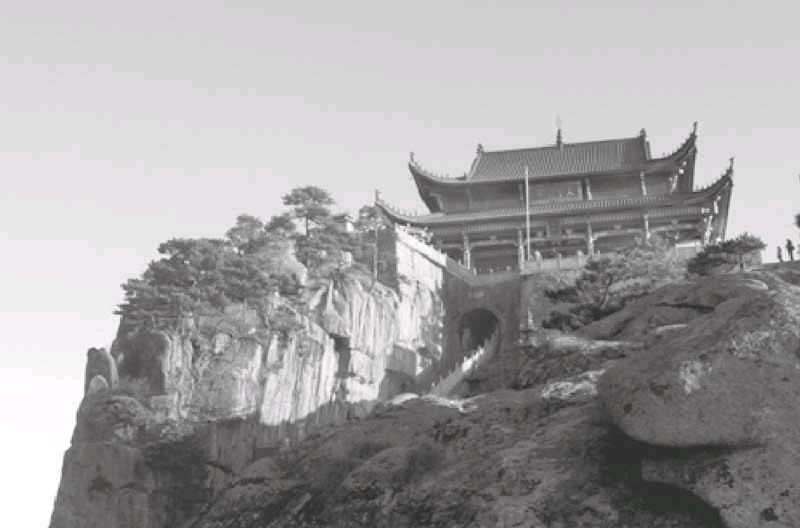
Since then, the burning incense began to get stronger and stronger. Taoist activities on Qi Yun Shan became more and more flourishing. This marked the beginning of Qi Yun Shan served as the Taoist center in the areas beyond the southern bank of the Yangtze River.
Many distinguished personages in history were attracted by its unique beauty and came to visit. They left thousands of stone tablets and stele, of which about 537 still exist.
There are plenty of tablet inscriptions and stone inscriptions on Qi Yun Shan. They amounted to over 1,400 throughout history, but were corroded by nature and destroyed by man over the years.
The fairly early stone inscriptions include those of the Daguan era of the Northern Song dynasty and the Shaoxi era of the Southern Song dynasty, and about 80 per cent are those of the Ming and Qing dynasties.
These tablet inscriptions and stone inscriptions are of various styles, including all the calligraphic styles. They are of great calligraphic value. Among them, the inscriptions “heavenly magical beautifulness”, “marvelous prominent peak” and“wonder from time immemorial” are so grand that they are acclaimed as the acme of perfection.endprint
- 中国经贸聚焦·英文版的其它文章
- Chinese companies prepare to modernize rail systems globally
- How do other countries supervise vaccination?
- Latest Public Official Changes in China
- Exhibitions
- Hu Haifeng Jiaxing Vice Secretary served as Acting Mayor
- Cheng Lianyuan Kunming Party Secretary served as Provincial Committee Leader

